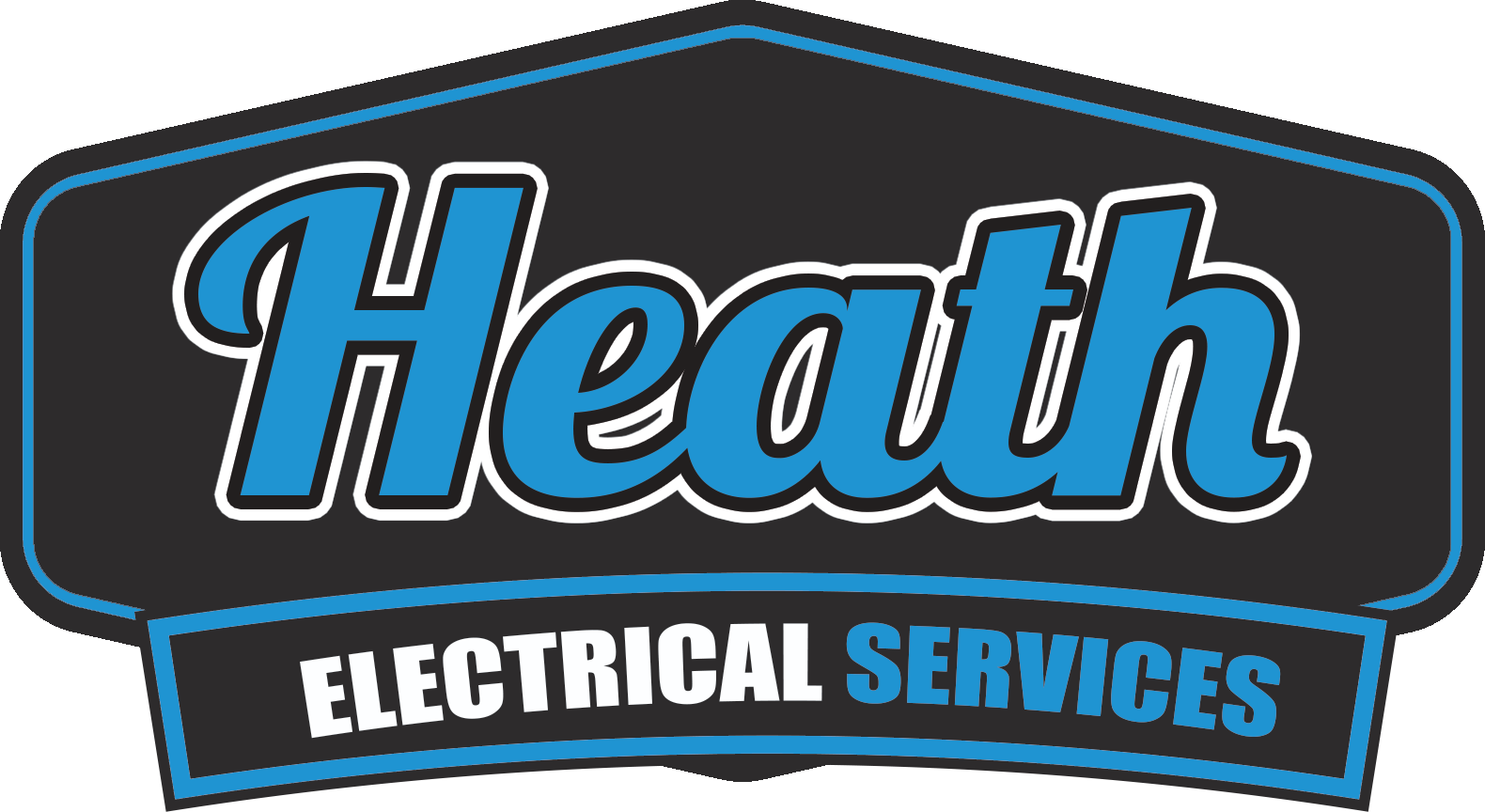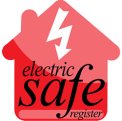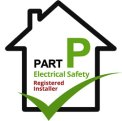What is a consumer unit? Otherwise known as the fuse box, a consumer unit plays a vital role in your property, responsible for controlling the electrical supply of your home. Although it is an aspect of our home that all of us would recognise, many of us would struggle to name the inner components, along with what they are used for, hence why we have put together this handy guide to answer this question.
Having many years of experience as electricians in Milton Keynes and the surrounding areas, we are well educated on consumer units, including the different types available and their components. We hope to inform you not only on how to distinguish between the components of your fuse board but also how to ensure that the system remains in full working order.
What is a consumer unit? Our guide
The most straightforward way to explain a consumer unit is that it is the point in your property where electricity enters, before being distributed throughout each room. This is all made possible through a collection of unique components, most of which will automatically play their role without you having to lift a finger. Now, if you are not in the electrical industry, then this can all sound a little confusing, when in reality, the moment that the aspects are broken down, it all starts to make sense. To help you to understand the ins and outs as well as the types of consumer units, we have broken our guide down into the following topics:
- Consumer units explained
- Which consumer unit do I need?
- Maintaining your electrical consumer unit
- Consumer unit FAQs
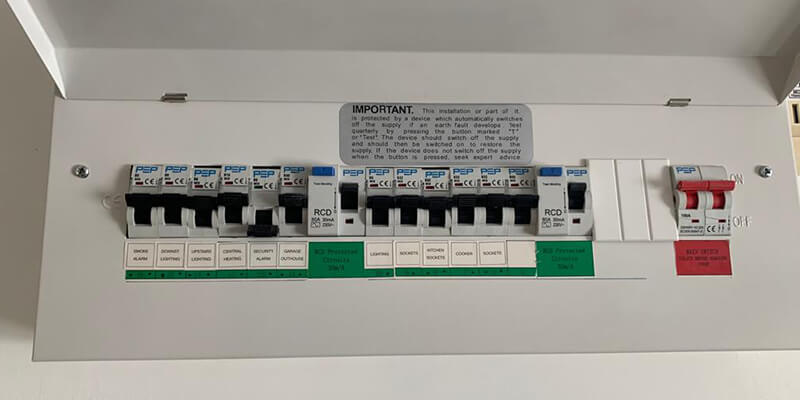
Consumer units explained
The consumer unit is used to power all of the circuits in your property and is made up of several different components, all of which have their own responsibility. To understand how your consumer unit works and potential problems that it may encounter, familiarising yourself with these components is key. So, let’s take a closer look at what you can expect when looking at the internal parts of your consumer unit:
The main switch
Just as the name suggests, the main switch is responsible for supplying the consumer unit with electricity from the meter. Once you turn off the main switch, your consumer unit will become isolated, and your property will no longer be provided with a supply of electricity. This is the only switch in the fuse board that can be manually turned off and on again. For example, if you needed to carry out any repairs on your electrical system or you were experiencing a severe issue, then you would use the main switch to turn off your electricity supply.
RCD
The RCD, also known as the Residual Current Devices, is a set of switches that is in charge of monitoring all of the electrical currents in your home. They help to prevent electric shocks, as well as identify faults that could cause a fire. As soon as they notice that the power flow is not balanced, the switches will automatically turn off, which is also known as tripping. As of the July 2008 Wiring Regulations, it has become mandatory for all new or rewired properties to be equipped with an RCD for safety purposes.
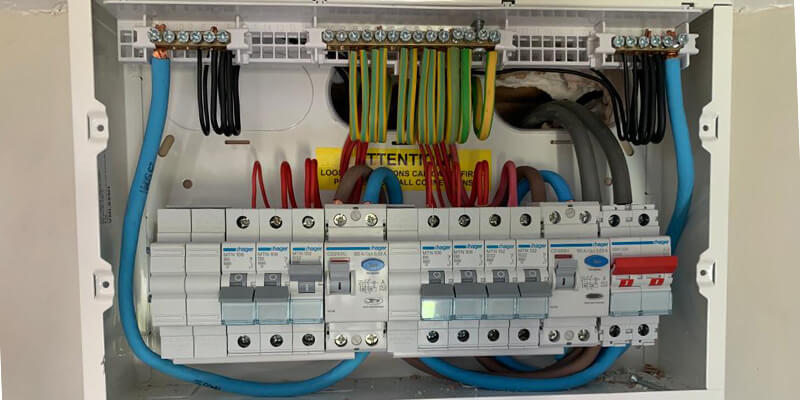
MCB
The Miniature Circuit Breaker (MCB) is the small port that your electrical circuits connect to. Much like the RCD, the circuit breakers turn themselves off, but in this case, the trip may be caused due to two different reasons. The first of these is an overload of power, commonly down to too many items being plugged into one circuit, and the second is an overcurrent. If the circuit itself has a defect, such as a loose live cable, then an overcurrent will be produced. More information on Miniature Circuit Breakers can be found on Consumer Unit World.
RCBO
RCBO stands for Residual Current Breaker with Overcurrent, and this component, in straightforward terms, combines the use of an RCD and MCB. This makes it an important aspect of your consumer unit because not only does it prevent overloads, overcurrents and electric shocks, but it will also limit tripping.
SPD
An SPD, or Surge Protection Device, is not an essential component of your consumer unit and is only installed should your electricians feel as if it is necessary to do so. It acts as a layer of protection over both the electrical system itself and any equipment that you connect up to the system. During the initial installation of your fuse board, your electrician will complete a full risk assessment which will determine whether you would benefit from an SPD.
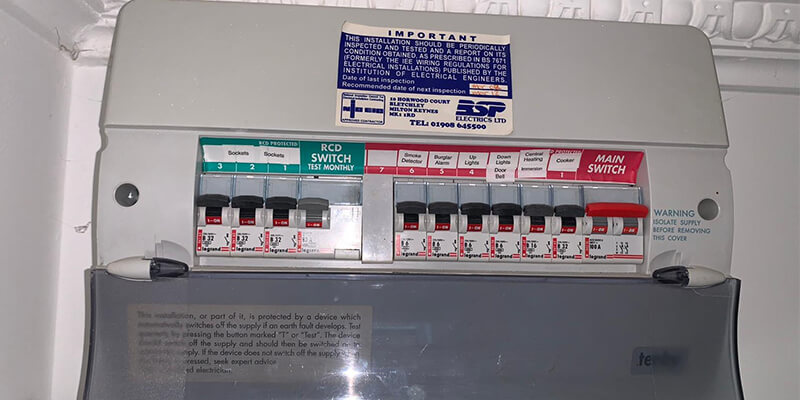
Which consumer unit do I need?
Once you feel confident in understanding the various components of a consumer unit, it will become considerably easier to tell the difference between the different types available and identify which is best suited to your needs. The essential functions and responsibilities of fuse boards will always remain the same; however, certain aspects will be slightly altered to accommodate different requirements. The types of consumer units include:
- Main Switch Consumer Unit – If you choose to go for a Main Switch Consumer Unit, then it will be supplied to you without any of the additional devices used for protection. It will feature only the main switch, but you can install an RCD and MCB if you wish to do so.
- Dual RCD Consumer Unit – The next option is a Dual RCD Consumer Unit, which, as you can expect from the name, will be equipped with two RCDs, as well as the conventional main switch. This remains one of the most popular fuse board types because it is far cheaper than its alternatives.
- High Integrity Consumer Unit – Featuring two MCBs, High Integrity Consumer Units offer an affordable layer of protection as they allow circuits to be separated. They are created with a simple design, making them straightforward to install and maintain.
- RCD Consumer Unit – These types of units are most commonly used for areas that require a smaller electrical supply, for example, a garage or workshop. Unlike their alternatives, an RCD Consumer Unit does not have a main switch because this function is controlled by a specialist RCD.
It is important to note that a consumer unit should never be installed through DIY methods as the process requires the knowledge and skill of a fully qualified electrician. Once installed, the unit will need to be thoroughly checked and tested to ensure that it meets high safety standards and industry regulations.
If you are looking for certified electrical contractors in Milton Keynes or any of the surrounding local areas, then please do not hesitate to contact Heath Electrical Services. Our team are not only approved by the NICEIC but also members of ECA, which means that you can have complete peace of mind that your property is in safe hands when you use our services.
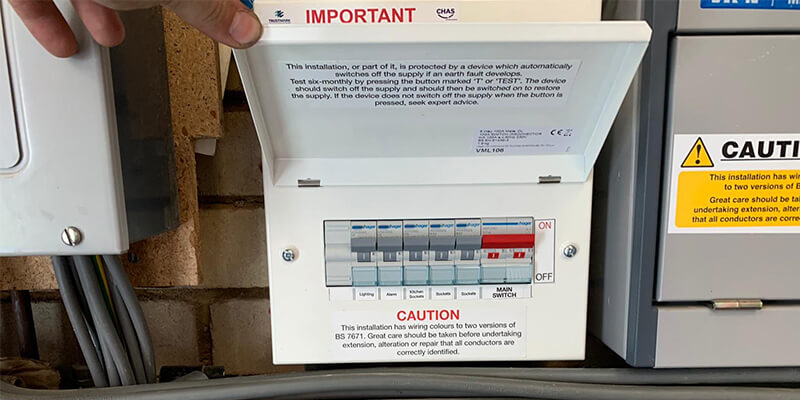
Maintaining your electrical consumer unit
Much like any other essential aspect of your home, the consumer unit requires regular maintenance to ensure that it remains in good condition and free from potential dangers. This means that it is of utmost importance to ensure that you are well-versed in how to care for your consumer unit, along with how to spot signs that a problem may be brewing. Follow our top tips below, and you should never experience any issues with your system:
Know the danger signs
Particularly if your consumer unit is plastic, there are a number of key warning signs that will indicate a growing issue – the first is regular tripping. While the protective components of your unit are designed to trip when they detect danger, if it frequently happens with no explanation, then it is recommended to enlist the help of professionals. Many fall into the trap of resetting the breaker each time that their electrics trip, and while this temporarily solves the issue, it will cause the problem to deteriorate, leading to more expensive repairs.
Another sign that you need to contact an electrician is a crackling sound coming from your consumer unit. The crackling sound is caused by arcing, which is the process of electricity jumping from one connection to another. This could be potentially fatal if someone were to touch the fuse board, risking skin burns, eyesight damage and even a shock big enough to knock you off your feet. Head over to ArcAd for more information on the dangers of arcing.
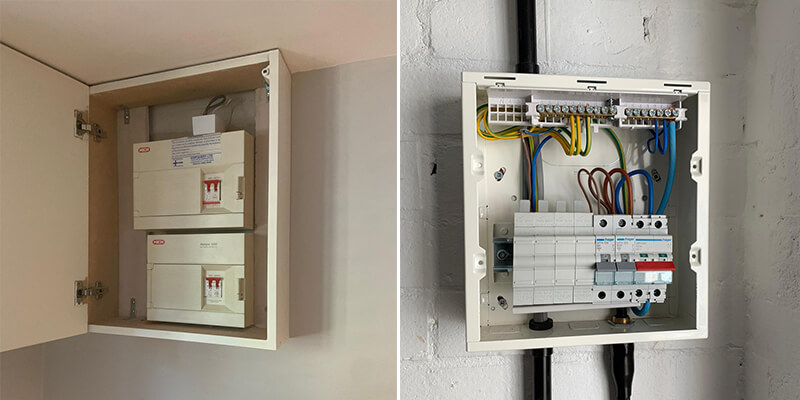
Check for visual defects
Along with keeping an eye out for danger signs, it is also vital to take the time every few months to visually inspect your consumer unit. There is no better way to spot issues before they have the chance to grow than by noticing changes in appearance. If you have never checked your consumer unit, then head over now and ask yourself the following questions:
- Is the cover secure?
- Are any parts of the consumer unit exposed?
- Are all of the wire covers in good condition?
- Has the plastic cover started to warp?
- Are any areas of the plastic burnt?
If you spot any of these visual defects, then, again, we would highly recommend booking in with an electrician to check the condition of the consumer unit. While it may only be a minor issue, it is much safer to resolve any problems while they are small to prevent further damage and keep your property protected.
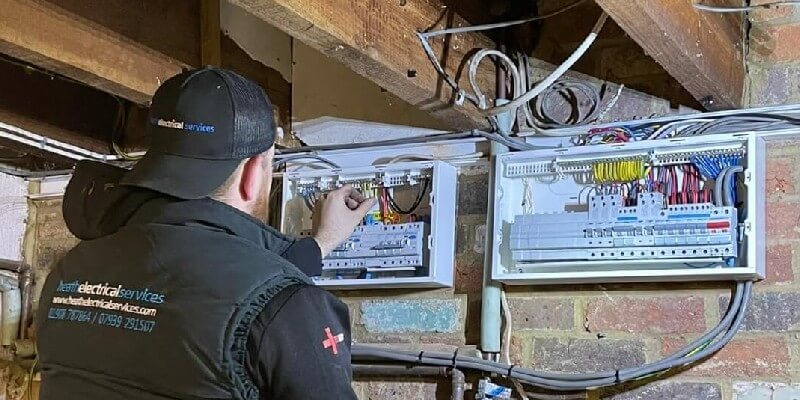
Schedule periodic inspection
With age and constant use, it is inevitable that at some point, electrical components will begin to deteriorate, which makes a periodic inspection essential in preventing any associated damage. A periodic inspection is carried out by a qualified, certified electrician and involves the assessment of electrical installations. How often you are required to schedule an inspection is based on your property type. For example, an owner-occupied home must be checked every ten years, whereas this is lowered to five years for a rented property and three years for a caravan. There are some instances where an inspection will be required ahead of these dates, such as before you move into a new house.
In opting for periodic inspections with trained professionals, you can keep fully updated on the condition of your electrical installations. It will highlight several different potential issues, such as electric shock dangers and fire hazards, helping you keep your property safe. Your electrician will also be able to spot whether any of your circuits have overloaded since the last testing and advise on any recommended repairs to protect your home.
For a full guide on electrical inspections and testing, head over to our previous article. Alternatively, to book in for one of our electrical inspections in Milton Keynes, you can get in touch with our team, who will get you scheduled in for a date and time that is convenient for you.
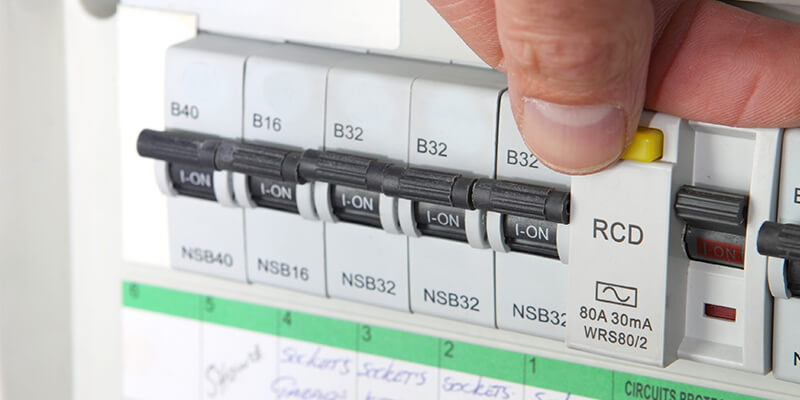
Consumer unit FAQs
Here are the answers to some common questions that people have surrounding consumer units:
Do plastic consumer units need to be replaced?
Although plastic consumer units no longer meet safety regulations, you are not required to replace yours so long as it is equipped with up-to-date safety features and fully encased in a non-combustible material.
Do I need surge protection on my consumer unit?
The majority of buildings require surge protection on their consumer unit. For more information on the regulations surrounding this, check out this article.
How many consumer units can you have?
There is no limit on the number of consumer units you are able to install on your property, so long as each one has a functional main switch (or RCD alternative).
What height should a consumer unit be fitted?
The height at which you mount your consumer unit must be such that the switches of the unit are between 1350mm and 1450mm above floor level.
How much does it cost for a new consumer unit?
The cost of replacing your consumer unit will depend on several factors, such as the type of new unit desired, the number of circuits involved, and the condition of your current unit. You can expect to pay approximately £375 to £550 for the average consumer unit replacement, for both the unit and the labour involved in installing and testing the new unit.
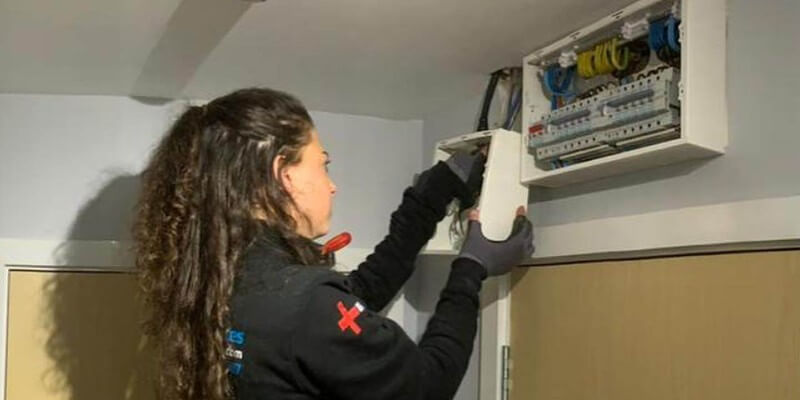
Choosing the right consumer unit for you
Choosing the correct consumer unit for you and your property may take considerable research and planning; however, the extra work will ensure that your home or commercial premises remain safe and supplied with the correct electrical supply.
If you have any further questions with regards to consumer units that were not answered in this article, we’d be happy to answer them and advise on the best option for your property. Feel free to contact Heath Electrical Services today to talk to one of our experienced electricians in Milton Keynes or one of the surrounding areas.
